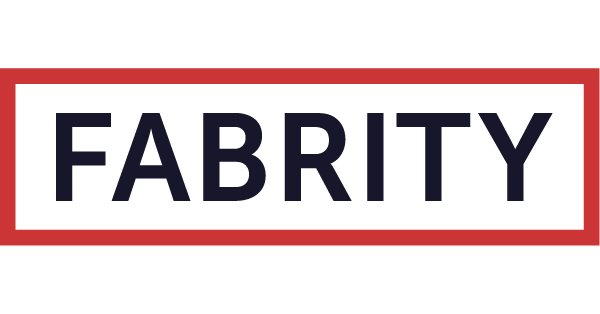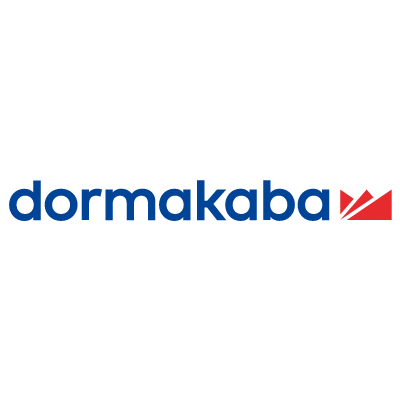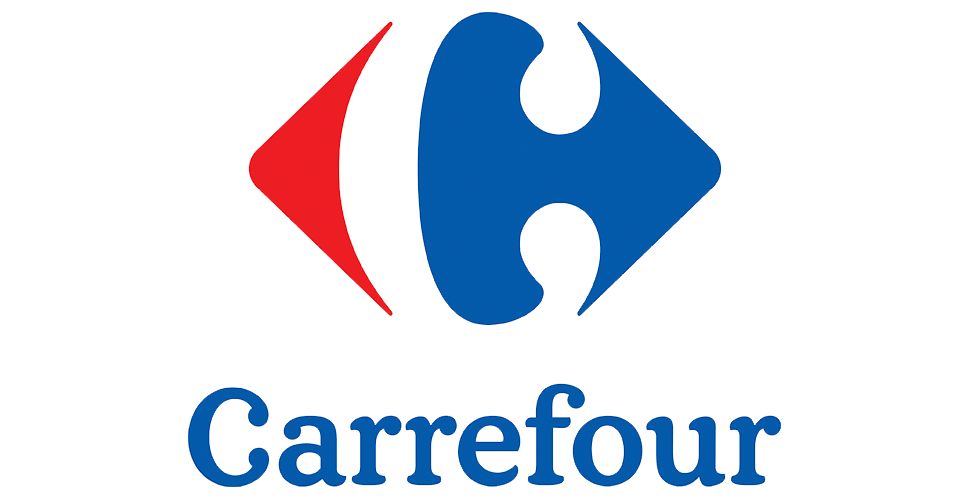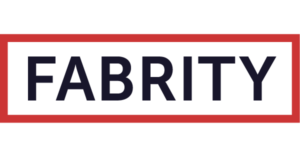As frontend technologies continue to evolve, user expectations rise just as quickly. Modern businesses now require fast, responsive, highly dynamic user interfaces—features that are often difficult to implement within a traditional content management system (CMS). This is where headless architecture becomes a valuable solution.
Although Drupal is commonly viewed as a traditional, monolithic CMS, it has been prepared for this transformation for quite some time. Beneath its classic surface is a flexible, API-first system that integrates seamlessly with modern frontend frameworks such as React and Next.js.
In this article, we will examine how the Drupal as a headless CMS with React/Next.js stack works, when it provides the greatest benefits, and what technical challenges organizations should be aware of before adopting this approach.
How headless Drupal works
In a traditional setup, Drupal manages both the backend and the frontend—the logic, the content, and the rendering. in a headless configuration, that changes significantly. Drupal becomes a pure content engine, focused entirely on storing and managing data. the visual presentation is handled externally, typically by a modern JavaScript application powered by React and rendered on the server through Next.js.
Communication between the frontend and Drupal is handled via APIs—most commonly REST or GraphQL. These APIs can be generated using native tools such as JSON:API or RESTful Web Services, or using solutions like the GraphQL and GraphQL Compose modules.
A typical architecture includes three core components:
- Drupal—provides the editorial interface, manages content storage, and enforces access control.
- GraphQL / JSON:API—serves as the data-fetching layer between the backend and the frontend.
- React + Next.js—delivers the frontend experience, often enhanced with server-side rendering (SSR) or incremental static regeneration (ISR) for performance and SEO benefits.
Advantages of Drupal as a headless CMS
Frontend flexibility
By decoupling the frontend from the CMS, developers are no longer restricted by platform-imposed templates or rendering engines. They are free to use modern JavaScript frameworks such as React or Vue to design immersive, responsive, and dynamic user interfaces. Without the constraints of Drupal’s Twig templating system, the door opens to advanced animations, micro-interactions, and rich user experiences. Whether the architecture requires a single-page application (SPA), a multipage application (MPA), or a hybrid model, the choice is entirely in the hands of the development team. This flexibility proves especially valuable in projects where user experience drives retention and conversion. Additionally, shared frontend components can be reused across projects, improving scalability and reducing technical overheads.
Read more on Web development:
Headless CMS vs. traditional CMS—comparison
A web application security checklist for every stage of development
Micro frontends: pros and cons
Progressive web apps (PWA)—a gentle introduction
Angular vs. React—which one to choose
React vs React native—which one is better for your business
What is the Electron software framework?
15 reasons why Drupal is a leading CMS choice in 2024
React best practices that accelerate app development and cut maintenance costsScalability and performance
Combining Drupal with a framework like Next.js unlocks advanced rendering strategies such as SSR and ISR. These techniques allow applications to respond flexibly to changing traffic patterns, rebuild only the required content, and deliver consistently fast load times. Independent optimization of backend and frontend layers enhances performance and improves caching efficiency, particularly when paired with a content delivery network (CDN). This setup is ideal for content-heavy platforms such as e-commerce sites, media portals, and high-traffic digital services. Furthermore, teams can allocate resources between backend and frontend workloads without compromising system performance.
Team autonomy
A headless architecture naturally promotes modularity. Backend and frontend teams can work simultaneously, treating the API as a shared contract. One team can develop the logic and content models within Drupal, while the other builds the interface layer independently. This separation accelerates delivery timelines, improves coordination in distributed or agency teams, and reduces the risk of regressions. As long as both teams adhere to the API specification, changes remain isolated and easier to manage.
SEO and speed
Next.js brings native support for SSR and static site generation (SSG), both of which significantly enhance search engine visibility. Pages can be pre-rendered, improving indexing speed and performance scores—key factors in organic traffic acquisition. High Lighthouse scores not only influence search rankings but also translate to smoother experiences for mobile users. in addition, developers gain fine-grained control over metadata, structured data, and redirects, further strengthening the SEO foundation.
Editor-friendly
Despite its separation from the frontend, Drupal retains its strength as one of the major content management systems. Editors continue to benefit from a full-featured interface, using tools such as Paragraphs, Layout Builder, and a wide ecosystem of contributed modules. These capabilities empower nontechnical users to create complex content layouts without needing development support—an essential feature for editorial teams managing enterprise websites, news platforms, or high-volume landing pages.
Drawbacks and trade-offs of headless Drupal approach
Increased architectural complexity
Moving from a monolithic system to a headless architecture introduces significant complexity. at a minimum, it involves maintaining two distinct applications: Drupal as the content backend and React/Next.js as the frontend. This dual structure increases DevOps responsibilities and demands robust infrastructure. Teams must manage synchronization between the systems, monitor each independently, and maintain CI/CD pipelines, logging mechanisms, and version control across both repositories. Debugging becomes more intricate, particularly when addressing issues related to API contracts. Maintenance costs rise, and onboarding new developers can be more challenging due to the steeper learning curve. This model works best for organizations with mature processes and experienced development teams.
Development and testing cycles are also longer. Since the frontend and backend are handled separately—often by different teams—tight coordination is essential. Features commonly available in monolithic Drupal environments, such as user authentication, content preview, or multilingual support, must be rebuilt manually. for projects with limited resources, this can be a significant burden. Testing is further complicated by the need to cover two distinct technology stacks. As a result, headless development may not be suitable for small teams, rapid MVPs, or startups operating under tight timelines or budgets.
Loss of “out-of-the-box” functionality
Drupal is known for offering powerful features immediately upon installation—visual editing tools, content preview, menu systems, routing logic, and display controls. in a headless implementation, many of these benefits are no longer available by default. They must be rebuilt in the frontend or omitted entirely.
This reimplementation effort is often underestimated during the planning phase. Failing to account for it can introduce hidden complexity, increased development time, and long-term technical debt.
When headless Drupal makes sense
Multi-channel digital platforms
For projects that deliver content across various platforms—websites, mobile applications, smart TVs, kiosks—a headless approach becomes highly advantageous. Drupal can serve as the central content repository, exposing a single API that multiple clients can consume. Whether it is a React-based web application or a native mobile app, the content remains consistent and centrally managed. This approach reduces content duplication, simplifies localization, and lowers long-term maintenance costs, making it a particularly effective approach for enterprises with a broad digital footprint.
High SEO and performance requirements
When performance is mission critical—especially on mobile—combining Drupal with Next.js offers a clear edge. SSR and SSG ensure that pages load almost instantly. the result is improved user experience and better SEO performance, both of which are vital for high-stakes environments like news platforms, e-commerce, and marketing websites. Additionally, developers gain full control over HTML structure, metadata, and client-side behavior—features often limited or inaccessible in traditional monolithic setups.
Team scalability and autonomy
Organizations with distinct frontend and backend teams will find headless architecture aligns well with their workflows. the API serves as a stable contract between the two sides, enabling parallel development with minimal interference. This model supports continuous integration and delivery, reduces development bottlenecks, and fits well with agency collaborations, distributed teams, or contractor engagements. It also allows frontend redesigns without affecting backend logic, and vice versa, promoting long-term agility.
Modern UX/UI as a competitive edge
For products where the visual interface is a key differentiator, headless enables a modern, custom-built user experience. Frameworks like React and Next.js empower designers and developers to create advanced interfaces complete with animations, transitions, and micro-interactions—free of the limitations of Drupal’s theming system. This is essential when the frontend needs to evolve rapidly or serve as a competitive advantage.
Moreover, headless architecture is a strong foundation for long-term platform investments. Although the initial build may involve higher complexity and cost, it offers superior scalability, flexibility in tech choices, and the adaptability required for future business needs. This makes it ideal for iterative product development and helps avoid the limitations often associated with monolithic systems.
Drupal as an API-first CMS with advanced access control
Drupal excels as an API-first platform. It provides robust access control mechanisms out of the box, allowing restrictions based on user roles, content entities, individual fields, languages, and routes. in a headless model, where the API serves as the sole point of interaction, this level of control is crucial. Drupal’s architecture enables precise permission management for editors, external services, partners, or internal systems. Authentication can be securely managed with modules such as OAuth, JWT, or Simple OAuth, making it easier to build secure, scalable platforms, be they for B2B portals, editorial tools, or role-based intranets.
When a monolith is the smarter choice
While headless architecture offers flexibility and performance gains, it is not always the right fit. in many scenarios, a classic monolithic Drupal implementation remains the more practical, efficient, and budget-friendly option.
Standard corporate sites without complex UI
For traditional websites—such as company pages with basic content, a few forms, and standard navigation—a headless setup is unnecessary. Drupal provides everything needed out of the box: theming, previews, multilingual support, SEO features, and robust security. Introducing a separate frontend stack in such cases only adds technical overhead without clear returns. a monolithic setup handles these requirements elegantly and efficiently.
Tight budget or deadline
Projects with limited resources or accelerated timelines benefit from the simplicity of monolithic architecture. Headless development demands more planning, more infrastructure, and more coordination between teams. If the goal is to launch quickly, deliver a minimum viable product, or build a short-term platform, a traditional Drupal build is the fastest route to a fully functional, maintainable solution.
No need for multi-rendering or SPAs
If your application does not require dynamic client-side rendering, support for mobile applications, or multiple frontends, a decoupled architecture provides little added value. Drupal’s rendering engine is capable, and with modern themes and Twig templates, it can meet most design and user interaction needs. Avoiding unnecessary separation keeps the system lean and easier to manage.
Minimal maintenance requirements
For organizations without a dedicated maintenance team, simplicity should take priority. a monolithic Drupal site can be managed by a small team, requires less DevOps infrastructure, and is easier to upgrade and troubleshoot. by contrast, a headless setup involves maintaining separate systems, CI/CD pipelines, and monitoring solutions—adding complexity that may not be sustainable, especially when transitioning the project to an external support partner.
Choosing the tech stack for a headless project
Selecting the appropriate technology stack is a crucial factor for the success of any headless implementation. the chosen tools must support high performance, seamless integration, and efficient development. Below is an overview of the key components and how they interact within a typical decoupled Drupal setup.
Drupal—a reliable content backend
At the core of the stack is Drupal, a mature modular CMS designed for flexibility and scalability. It serves as the central content hub, managing data structure, validation, editorial workflows, and access control. with robust support for API-first development, Drupal can expose content through standard modules like JSON:API or GraphQL, making it accessible to any frontend system.
Drupal also supports multilingual content, granular permissions, and role-based access—all essential for platforms with diverse user groups and complex editorial requirements.
Data interface—JSON:API or GraphQL
The data layer is typically handled using one of two APIs:
- JSON:API—ideal for rapid implementation. It works out of the box and is easy to use.
- GraphQL—offers greater flexibility, allowing clients to query exactly the data they need. This improves performance by reducing payload size and accelerating rendering on the frontend.
GraphQL is especially effective in projects involving complex relationships or custom views. Tools like GraphQL Compose can simplify schema configuration without the need for custom code.
React + Next.js—a modern frontend
The frontend is typically built with React and Next.js, a combination that supports multiple rendering strategies: SSR, SSG, and ISR. This flexibility allows teams to tailor performance and SEO strategies to the specific needs of the project.
React manages user interface components and state, while Next.js handles routing, page generation, and optimization for search engines. Together, they form a robust foundation for high performance, interactive web experiences.
CDN—efficient content delivery
Integrating a CDN reduces the load on the Drupal backend and accelerates delivery of static assets across global regions. This enhances both scalability and user experience.
Authentication—securing the API
For user authentication and secure API access, OAuth 2.0 and JWT are commonly implemented. These standards support token-based security and allow fine-grained control over user sessions and data permissions.
Drupal as a headless CMS—summary
Headless Drupal with React and Next.js is a powerful solution, but it is not universally applicable. It delivers exceptional flexibility, performance, and scalability, making it a strong choice for large-scale digital platforms with complex frontend requirements and distributed teams.
When rapid building of user interfaces, multi-channel distribution, and centralized content management are strategic priorities, a decoupled architecture offers a significant competitive advantage.
However, for simpler projects—such as standard websites, marketing landing pages, or time-constrained builds—a monolithic Drupal implementation remains a smarter, leaner choice.
As an API-first CMS with a rich editorial interface and advanced access controls, Drupal continues to provide a dependable foundation that integrates seamlessly with modern frontends—making it a versatile tool in both traditional and headless scenarios.










